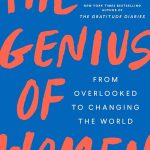Review by Nicole Louie
In Women in White Coats: How the First Women Doctors Changed the World of Medicine, Olivia Campbell tells the story of three courageous women who fought for their medical education and degrees in the mid-1800s. They are Elizabeth Blackwell, Elizabeth Garrett Anderson and Sophia Jex-Blake.
Dedicating herself to years of research in archival collections in the US and UK, Campbell puts together an informative and entertaining book that starts with a brief history of women as healers up to the Victorian era:
“Women have delivered healthcare across the globe for centuries as herbalists, healer-priestesses, shamans, apothecaries, healers, wise women, witch doctors, diviners, surgeons, nurses and midwives. But this rich history is largely overlooked, and very few names have weathered the passing of time.”
The author explains that in the late 19th century, many women were not seeking out medical help because they felt uncomfortable, embarrassed or simply were unable to relay their symptoms to male doctors who failed to acknowledge and treat their pain. It was in this context that the three protagonists decided they would take it upon themselves to provide more compassionate healthcare to women.
However, the journey ahead would be filled with hurdles that often seemed insurmountable: stereotypes by family and friends who believed that a woman could be a nurse but never a doctor; banning entry at existing universities; threats by male students to abandon the course if women were allowed in; bullying tactics inside the classroom; refusal by professors to provide women with references; difficulty in finding a place to gain clinical practice as most hospitals turned women down; and many more unfair and misogynic barriers placed every step of their way. As Campbell points out:
“These women couldn’t just be students, they also had to be women’s rights activists. If they wished to fully reenter the realm of medicine as doctors, they’d have to put up a hell of a fight. One sought a degree in Scotland with disastrous results. One was forced to travel to France for her degree. One’s college application was considered a practical joke. Each would grapple with defining women’s work and purpose. But even in the early days of their studies, each one recognized their role as trailblazers paving the way for others.”
One of my favorite passages illustrates the importance of having role models and how they can propel us further. It starts in chapter three, where nine years after Blackwell graduated as a doctor in the United States, Anderson, then a twenty-one-year-old in England,
“…was reading the April 1858 issue of the English Woman’s Journal, where she first encountered the idea of a lady doctor. She read the twenty-page biography of Elizabeth Blackwell with great interest and learned about how this industrious woman, who lacked the wealth or connections she herself possessed, successfully navigated her way through every obstacle to obtain a medical degree and establish a practice helping New York’s poorest women and children out of illness and destitution.”
Equipped with the knowledge that a career as a female doctor was possible, Anderson went on to become an English physician and co-founder of the London School of Medicine for Women, the first medical school in Britain to train women as doctors.
In 1861, Anderson and Jex-Blake attended a physiology lecture and became friends. Inspired and supported by Blackwell who sent letters from overseas, they continued to fight for women’s access to a university education in Britain. Jex-Blake began studying medicine at the University of Edinburgh in 1869, became the first practicing female doctor in Scotland and helped found two medical schools for women, one in London and one in Edinburgh.
While the book reads unevenly at times, alternating between the style of a novel and a biography, overall, Campbell succeeds in telling the personal stories of women who showed a great deal of resilience and forever changed a profession that one and a half centuries later has a very different outlook, as “in 2017, for the first time ever in the US, there were more women medical students than men.”
In my forty years in this world, whenever I needed medical care, a part of me always thought: please let it be a female doctor. After reading Women in White Coats, I appreciate even more the fact that women have conquered access to medical training and the possibility of being treated by them.
*********************
Thank you, Nicole, for another great review for the LiveTrue Books collection!

Nicole Louie is a writer and translator based in Ireland. Her essays and poems have appeared in Oh Reader magazine, Loft, What’s the Theme Zine, among others. You can find her on Twitter and Instagram: @bynicolelouie. Her first book, Others Like Me: The Lives of Women Without Children is out in June.





